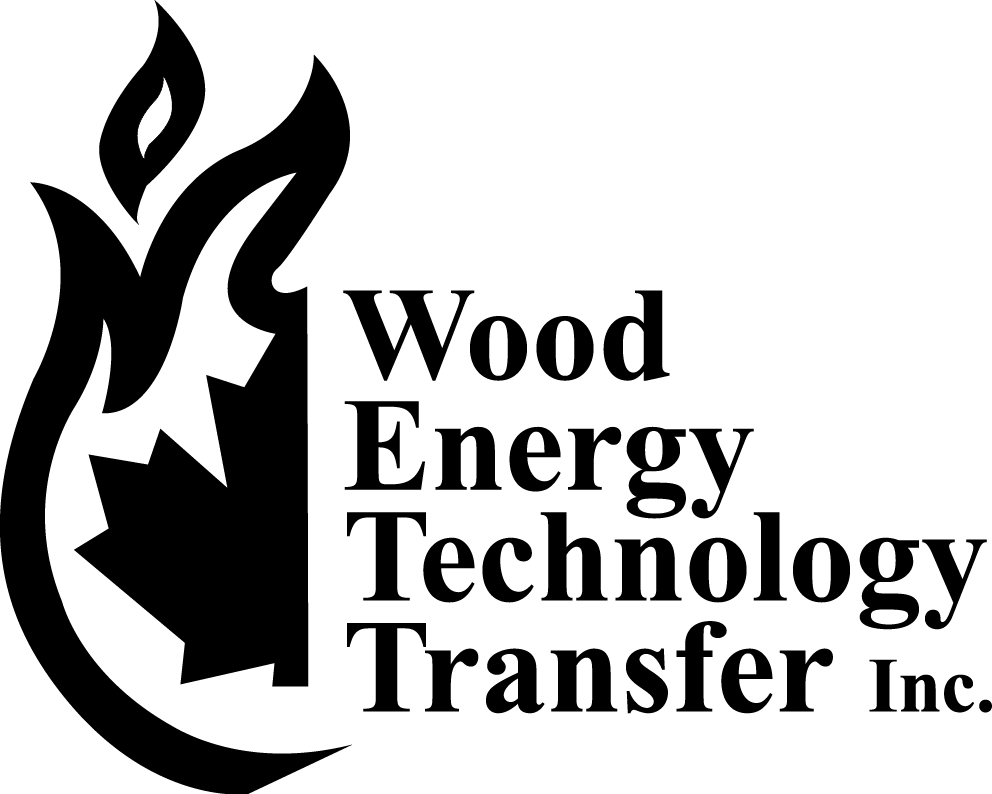
Frequently Asked Questions
-
A WETT inspection™ is the inspection of a solid-fuel-burning system, performed by a WETT-certified professional, for compliance with applicable codes and standards.
We frequently receive requests for a “WETT certificate,” a “WETT certification,” a “WETT approval” or asked if it’s a “WETT-certified installation.” We also receive requests for companies that are “WETT certified.” WETT does not certify appliances or installations; our mandate is training and education. WETT certifies individuals, not companies. Appliances are certified by test laboratories.
Your WETT-certified inspector should provide you with a written inspection report (not a WETT certificate). Their WETT certification number should be included on the report.
To find a WETT-certified professional in your area to inspect your solid-fuel-burning system, check the Search for Professionals page on our website https://www.wettinc.ca/search-wett
-
SITE™ is a set of standardized guidelines and procedures that are recommended by WETT for the inspection and/or evaluation of wood-burning systems. WETT outlines three levels of inspections.
Level 1: Visual inspection
Level 2: Technical inspection
Level 3: Invasive inspection
Click here to view the WETT SITE™ inspection table
Not sure what you are looking for? Click here for search tips and to find a WETT-certified professional
-
SITE® outlines three levels of inspection
An inspector will be able to help you assess which level of inspection is required based on your needs. For most insurance and real estate inspections, a Visual inspection is sufficient. If, during the course of the inspection, the inspector sees signs of concern, a Technical or Invasive inspection may be recommended.
Visual Inspection
A Visual Inspection may be required as part of a real estate purchase, as requested by your insurer, as required by the Authority Having Jurisdiction or as part of a Fire Code requirement. It also provides peace of mind to you prior to using the appliance.
This includes a basic inspection of the solid-fuel-burning appliance and venting system components that are visible. It will include measurements of clearances, opening stove doors and all ground-accessible dampers/clean-out doors, and a visual inspection of the chimney from the ground. It will identify and note any deficiencies and red flags that may require a more detailed inspection. It will include a final inspection report, preferably on WETT inspection forms.
If there is obvious evidence of a problem with the system, a “Technical” inspection should be completed.
Technical Inspection
A Technical Inspection may be required by the insurance company or Authority Having Jurisdiction. This could be required where there are concerns noted in a “Visual” inspection, or after a significant period of time where the appliance was not used. If you have replaced some components in the system, this inspection will review the system as a whole. It may also include a recommendation for an invasive review where some components are not accessible.
This inspection would include all elements of a “Visual” inspection. It would also include a hands-on inspection, which may include the moving or removal of doors, panels, other coverings or system components, taking apart flue pipes, entering the attic to view additional system components, and may include accessing the chimney on the roof. The WETT inspection report will include all findings and clearly define what was able to be accessed and what not able to be inspected.
A chimney fire, seismic event or suspected incident may require completing an “Invasive” inspection if some components of the system are not accessible through the “Technical” inspection.
Invasive Inspection
When concealed components identified in a “Technical” inspection require further investigation, this inspection should be completed. If there has been a chimney fire or suspected incident and there are components not accessible with a “Technical” inspection, complete an “Invasive” inspection. The corrective actions indicated in the report must be completed prior to the appliance being used again.
An Invasive Inspection would include an invasive review of components. It may include opening walls or ceilings (drywall), disassembly or invasive work on masonry or prefab chimneys, examination of the chimney liner or other tasks that require additional construction-related skills.
The extent of the inspection and its purpose should be clearly discussed with your WETT Comprehensive Inspector prior to commencing. The WETT inspection form should be provided at the end of the inspection, and will include additional narratives to describe the results of the invasive work.
Click here to view the WETT SITE® Guidelines.
If your wood-burning system is not functioning properly or causing concerns such as smoke spillage, rapid creosote accumulation, etc., you should contract a WETT-certified technician or sweep.
Not sure what you are looking for? Click here for search tips and to find a WETT-certified professional.
-
WETT’s authority does not include regulating how much WETT-certified professionals charge for their services. This question can be asked when you call to arrange for an inspection.
-
As part of an inspection, you will receive a written inspection report. WETT provides members with inspection forms for their use. The report details the areas in which the installation meets or does not meet the requirements of the manufacturer’s installation instructions and the appropriate codes. An installation is either in compliance of the code or it is not.
Typically, most Visual Inspections will capture information that includes appliance type, certification markings, clearances and if the installation meets the relevant codes. Given the detailed nature of Technical and Invasive inspections, additional information may be captured.
Where an “Invasive” inspection is a follow-up to a previous “Visual” or “Technical” inspection, the previous report(s) should be made available by the client. A full, new WETT inspection form with additional notes should be included, as a number of areas previously unable to be inspected will now be reportable.
-
The nature of any inspection report is that it records what was seen at the date and time of the inspection. After completing an inspection report and leaving the premises, the inspector has no control over, nor knowledge of, any changes to a solid-fuel-burning system. Consequently, an inspection report can only warrant what was seen and recorded at the time of the inspection.
-
To find a WETT-certified professional in your area to inspect your solid-fuel-burning system, check the Search for Professionals page on our website.
Once on the members search page, choose the following:
Service: inspections, chimney sweeping or installations
City/town: enter the name of the city or town where the inspection, installation or sweep is required. If no results are found, enter the name of the largest city or town close to you.
Province: choose the province where the inspection, installation or sweep is required
Click on the “Start Search” button. This will bring up the complete list of all members in your area with your criteria.
-
You can verify that someone is certified by checking the Search for Professionals page on our website. Please note that not all WETT members choose to be listed on our website. If the person for whom you are searching is not on our website, you can verify WETT certification by emailing support@wettinc.ca.
It is important to note that WETT certifies individuals, not companies. Companies may advertise that they have WETT-certified people on staff. When contacting companies, you should make it clear that you are looking for a WETT-certified individual to complete work on your behalf. WETT-certified professionals are issued photo ID cards, which include a sticker for the current year.
-
WETT certifies individuals in the following categories (and combinations thereof)
SITE® Basic Inspector – These are individuals who can perform a Visual Inspection.
Technician – These are individuals who can install or perform maintenance on wood-burning appliances. They can also perform a Visual or Technical inspection.
Chimney Sweep – these are individuals who can clean and maintain your entire wood-burning system, including cleaning the chimney. The can also perform a Visual or Technical inspection.
SITE® Comprehensive Inspector – These are individual who can perform Visual, Technical or Invasive inspections. These individuals are also technicians and/or sweeps.
For information on what is required in order to become WETT certified, see our Paths to Certification (link to Paths to Certification page).
-
Candidate members are individuals who have successfully completed their training courses for certification but are still working on gaining the necessary experience to become certified. This takes some time. We allow five years for Candidates to become certified.
In areas where there are a limited number of WETT-certified members, or when WETT-certified members are unavailable, some insurance companies will allow you to contract services with WETT Candidate members. WETT feels it is better that you contact someone who has some formal training rather than use individuals who have not been exposed to professional training in the inspection, installation and maintenance of wood-burning appliances.
Important: please ensure you check with your insurance company to confirm they will accept an inspection report from a WETT Candidate member.
-
Keep in mind that WETT does not act as a regulator; our role is education. WETT does maintain internal processes to address breaches of our code of ethics. However, WETT cannot become involved in resolving consumer disputes. If your issue is regarding business practices, please contact the Better Business Bureau.
WETT-certified professionals must abide by a code of ethics requiring professionalism in all aspects of their work. The installation and maintenance of wood-burning appliances is not regulated in Canada. As a non-profit training and educational association, WETT does not oversee, nor is it responsible for, the workmanship of its members.
All communications regarding complaints must be received in writing. Additional documentation, including letters, inspection reports and pictures are encouraged.
To submit a complaint, please fully complete our Discipline and Dispute Form by clicking on this link and ensure you include supporting documentation.
Alternately, complete complaint information — with supporting documentation — can be mailed to our office. Written complaints must include:
Complainant’s name and full address, phone number(s) and email address
Address the dispute is about (either same as complainant address or different)
Information on the WETT member the complaint is about
Details about the complaint
Actions you have already taken
Copies of relevant documents, including letters, inspection reports, pictures, etc.
Click here to submit a dispute.
-
The Path to Certification is as follows:
Successfully complete the three-day Code Compliance course.
Successfully complete the two-day Wood-burning Systems course.
Successfully complete the two-day SITE® Inspection course.
Submit a verifiable declaration of 80 weeks industry experience as well as a letter of reference
Please view our national calendar for upcoming course dates.
-
While going through the WETT courses and before submitting your declaration of experience, no membership dues are required. Upon submission of your declaration of experience and successfully completing all the required courses, you become a full WETT member. The course fees cover the WETT membership dues for the remainder of the calendar year in which the last course is taken. You are required to pay membership dues for the next year.
Examples:
A member completes their last course and submits their declaration of experience in April of 2024. They become a full WETT member and their course tuition covers their membership dues until the end of December 2024. They are responsible for WETT membership dues for 2025 in order to remain an active WETT member in good standing.
A member completes their last course and submits their declaration of experience in November 2024. Their course fees cover their WETT membership until the end of December 2024, and they would be required to pay membership dues for 2025.
A member completes their last course in October 2024, but does not complete the declaration of experience until April 2025. Since their last course was in 2024, they would be required to pay membership fees for 2025 at the time of completing their declaration of experience.
